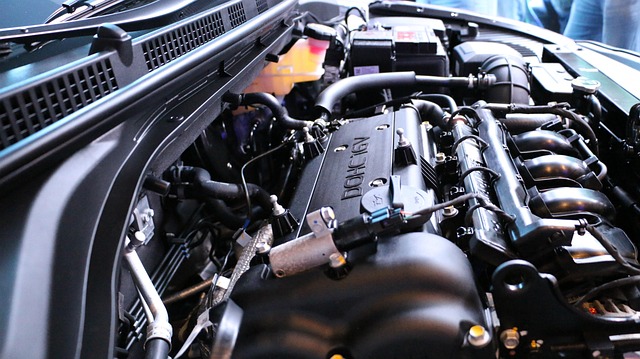Looking to register your car in California? This comprehensive guide walks you through every step, from understanding key requirements for car registration in California to completing the DMV vin verification process online or in-person. Learn what documents you need, prepare your vehicle for inspection, and discover post-registration tasks like insurance, tags, and maintenance. Streamline the process with our expert tips.
- Understand the Requirements for Car Registration in California
- Gather Necessary Documents for DMV Vin Verification
- Prepare Your Vehicle for Inspection and Title Transfer
- Complete the DMV Registration Process Online or In-Person
- Post-Registration Steps: Insurance, Tags, and Maintenance
Understand the Requirements for Car Registration in California

Before registering your car in California, it’s crucial to understand what is required. The California Department of Motor Vehicles (DMV) mandates several essential steps for car registration, including a comprehensive vehicle inspection and verification of key information. One critical component is the Vehicle Identification Number (VIN) verification, which ensures that your car meets safety standards and has no outstanding issues.
This process often involves utilizing reliable services like mobile VIN verification or a mobile VIN inspector to cross-check the vehicle’s history against national databases. These methods, including traditional DMV inspections, aim to prevent fraud and ensure that registered vehicles are safe for California roads. By meeting these requirements upfront, you streamline the registration process, making it faster and less stressful.
Gather Necessary Documents for DMV Vin Verification

Before heading to the California DMV for registration, it’s crucial to gather all necessary documents for a successful dmv vin verification. This includes your vehicle’s registration from the previous state, proof of insurance, and a valid driver’s license. Additionally, you’ll need the vehicle’s VIN (Vehicle Identification Number), which can typically be found on the dashboard or in the driver’s side door jamb. For a smoother process, consider having your vin inspection or mobile vin verification done beforehand to ensure all information is accurate and up-to-date. This step saves time at the DMV and helps prevent potential delays during registration.
Prepare Your Vehicle for Inspection and Title Transfer

Before heading to the California DMV for registration, ensure your vehicle is ready through a thorough inspection. This includes checking essential components like lights, brakes, tires, and windows to meet safety standards. Additionally, verify that your vehicle’s title is readily available; you’ll need it for the title transfer process.
A key step in this preparation is undergoing a DMV VIN verification, where your Vehicle Identification Number (VIN) is cross-referenced against the state’s records. For convenience, consider using a mobile vin verifier to complete this task, as it can save time and effort compared to traditional vin inspection methods. This verification ensures that your vehicle matches the title information, streamlining the registration process at the DMV.
Complete the DMV Registration Process Online or In-Person

You have two options for registering your car in California: online or in-person at a DMV office. Completing the process online is convenient and efficient, allowing you to submit all necessary documents digitally, including proof of insurance and ownership transfer. Start by visiting the official California DMV website, where you’ll find detailed instructions and an online form to fill out. Before you begin, make sure you have your vehicle’s Vehicle Identification Number (VIN) ready for verification. This crucial step ensures that your car is genuine and eligible for registration.
Alternatively, if you prefer a more traditional approach, visiting a DMV office is the way to go. Bring all required documents, including proof of identity, ownership, and insurance. A mobile vin verifier or inspector can also be helpful here, as they can quickly validate your vehicle’s VIN, saving you time during the in-person registration process.
Post-Registration Steps: Insurance, Tags, and Maintenance

After successfully registering your car with the California DMV (Department of Motor Vehicles), there are several crucial post-registration steps to complete to ensure your vehicle is legal and safe on the road. One of the most important aspects is obtaining insurance, as it’s both a legal requirement and a vital safety net for unexpected events. Make sure you have the appropriate coverage based on California’s minimum requirements, which protect both you and other drivers in case of accidents.
Additionally, you’ll need to obtain vehicle registration tags, which serve as a permanent identifier for your car. These tags must be displayed prominently on your vehicle at all times. Another key aspect is regular maintenance. California requires vehicles to pass an annual smog check to ensure they meet environmental standards. Consider scheduling regular appointments with trusted mechanics or utilizing mobile vin inspection services that can come to you, making it easier to stay up-to-date with these essential post-registration tasks. Always keep your DMV records and vehicle documents handy for reference and easy updates as needed.
Registering a car in California is a straightforward process that requires understanding specific requirements, gathering essential documents, and completing the registration through the Department of Motor Vehicles (DMV) either online or in-person. Remember to conduct a DMV VIN verification for accurate vehicle identification. After successful registration, ensure you follow post-registration steps such as insuring your vehicle, obtaining license plates, and maintaining regular service to keep your car legal and safe on California’s roads.
